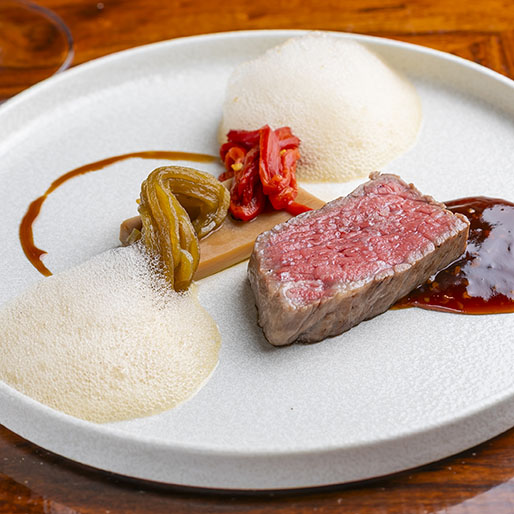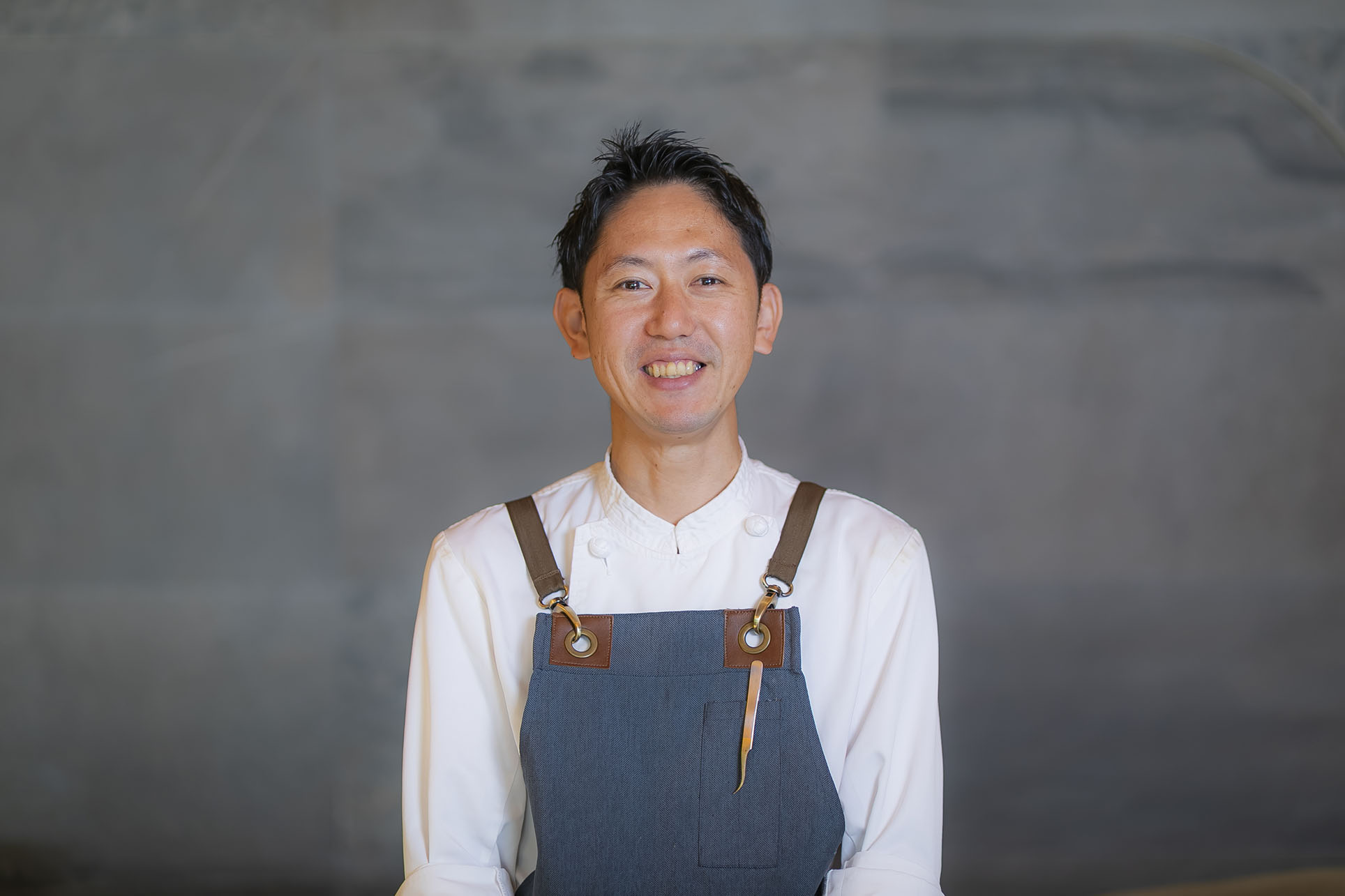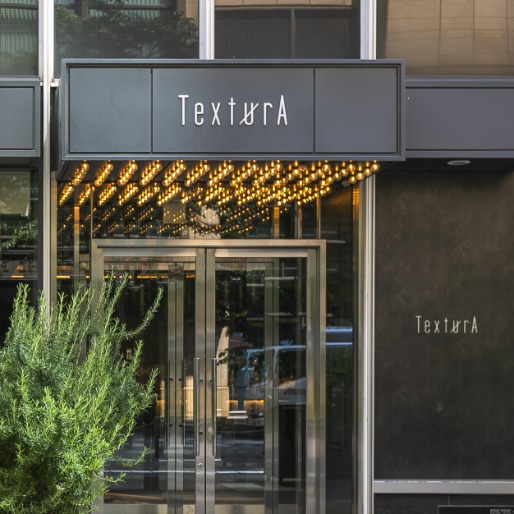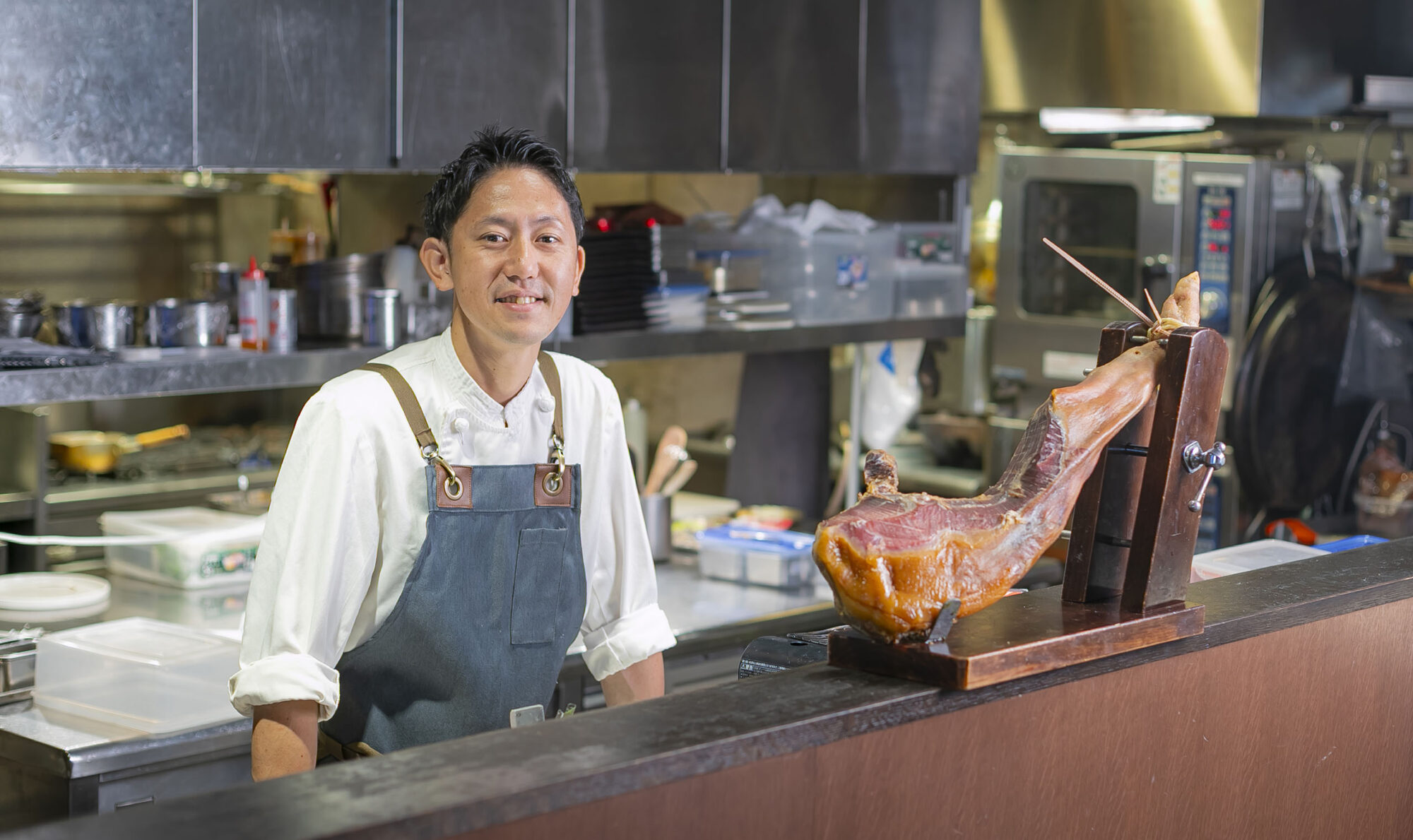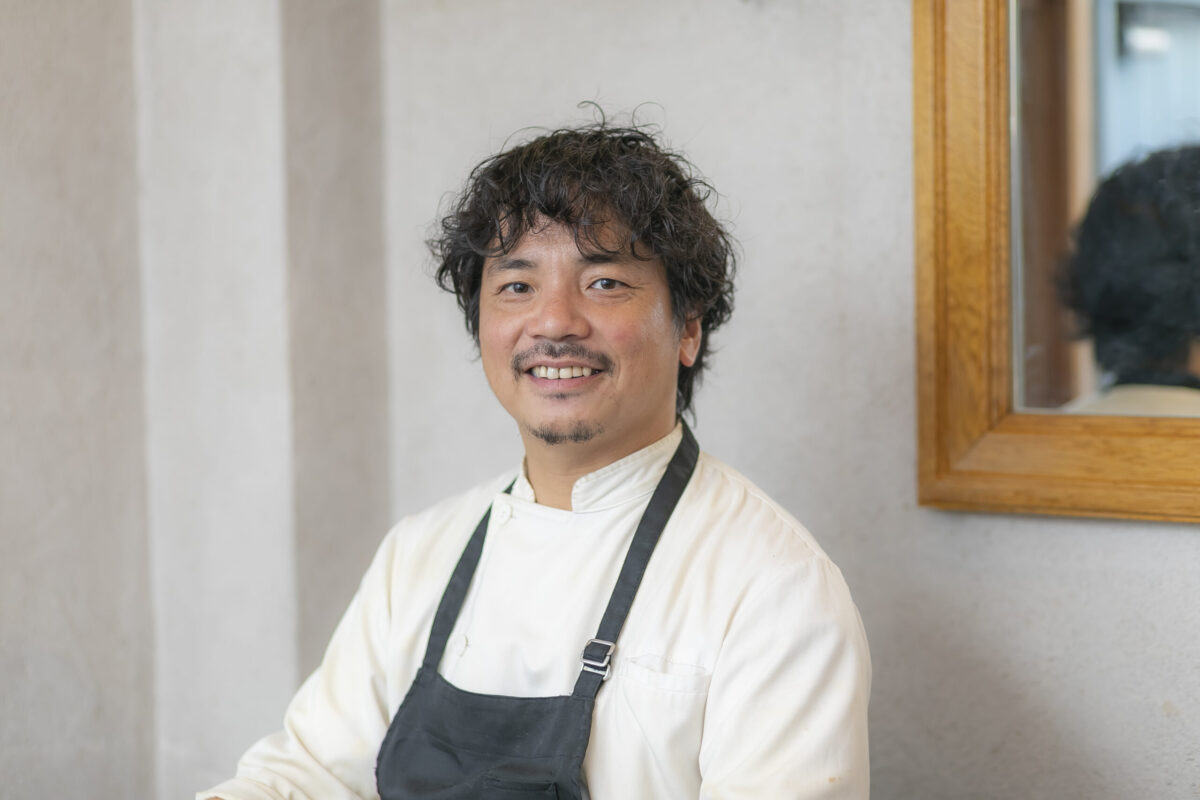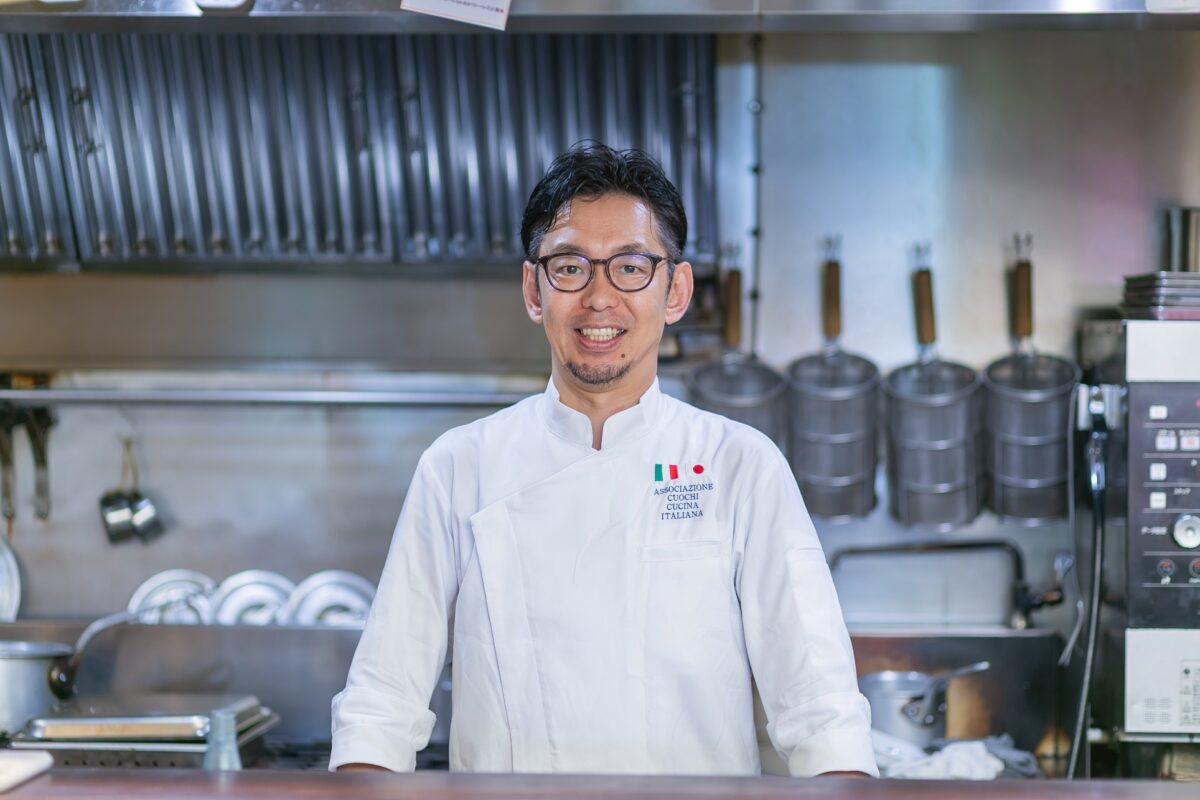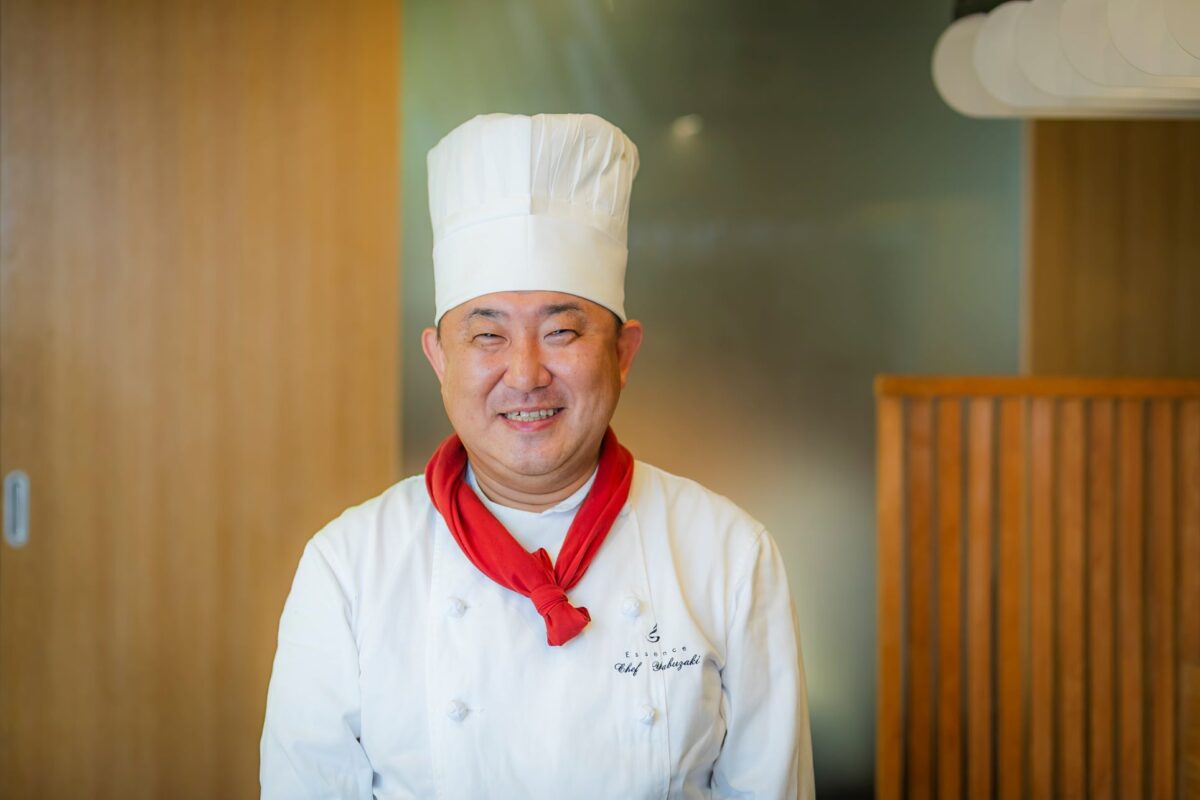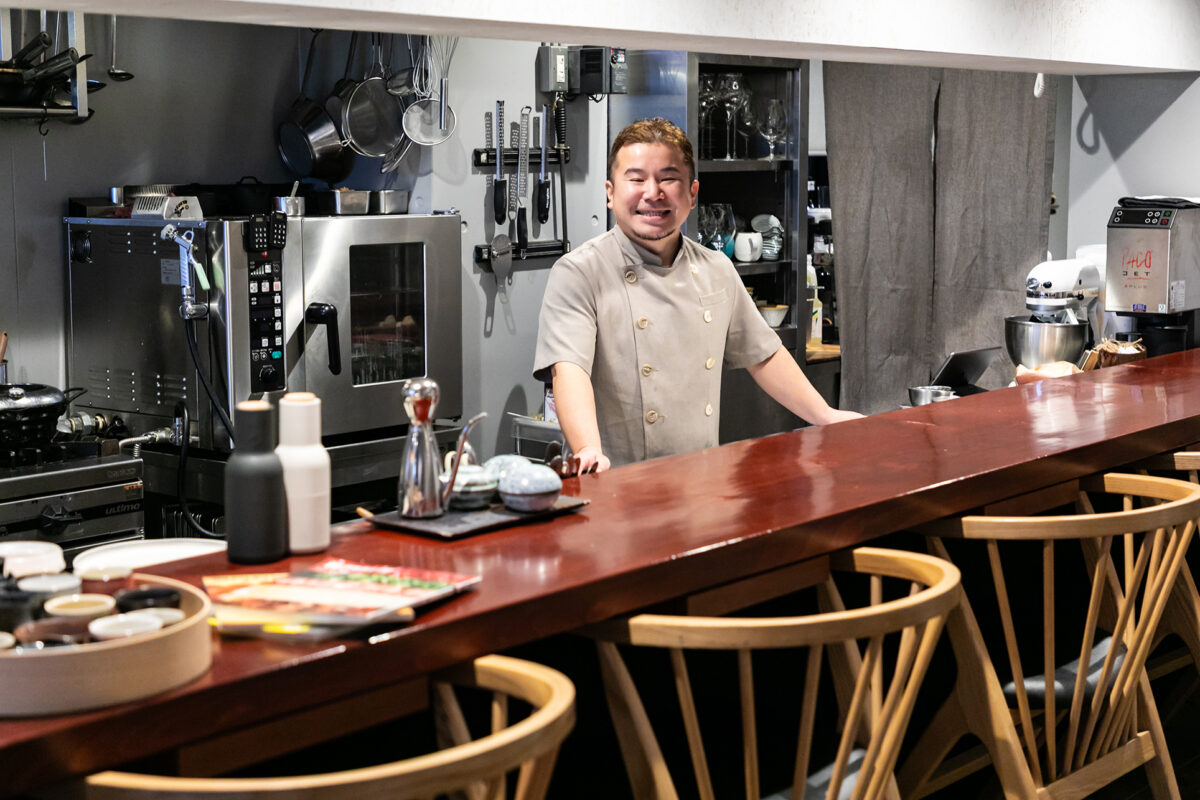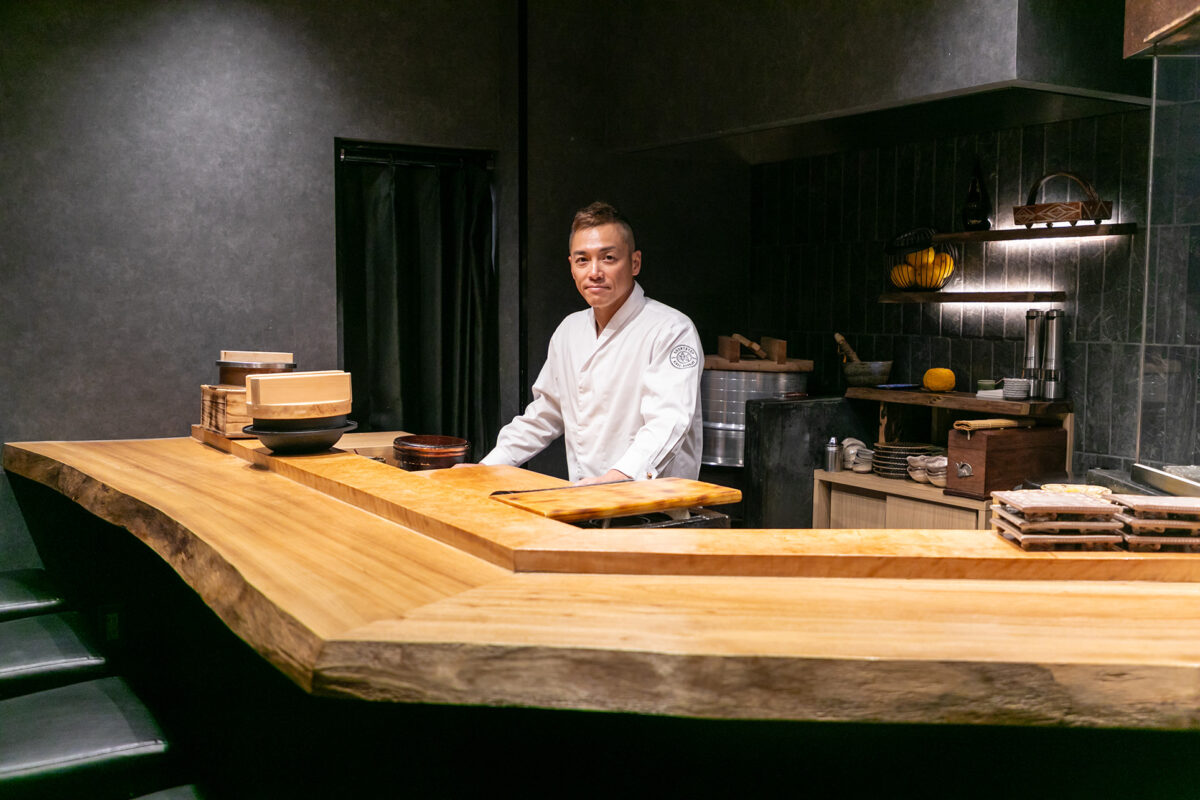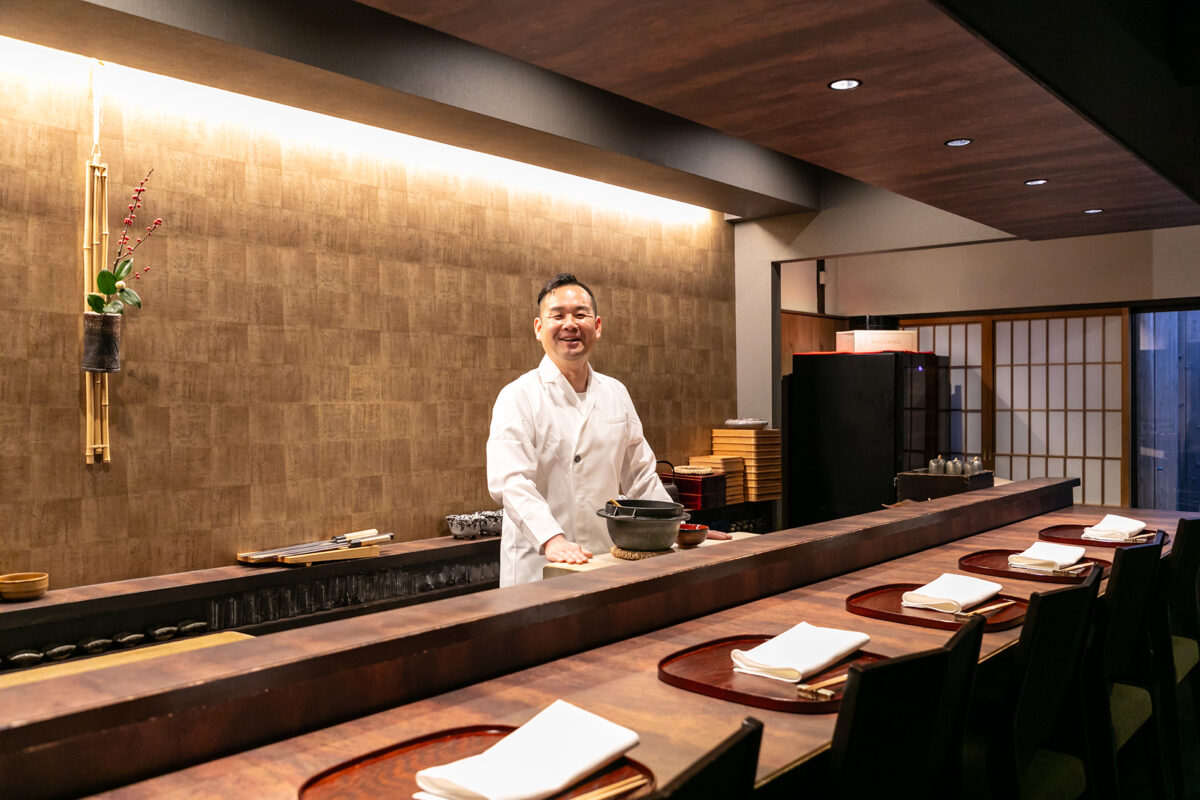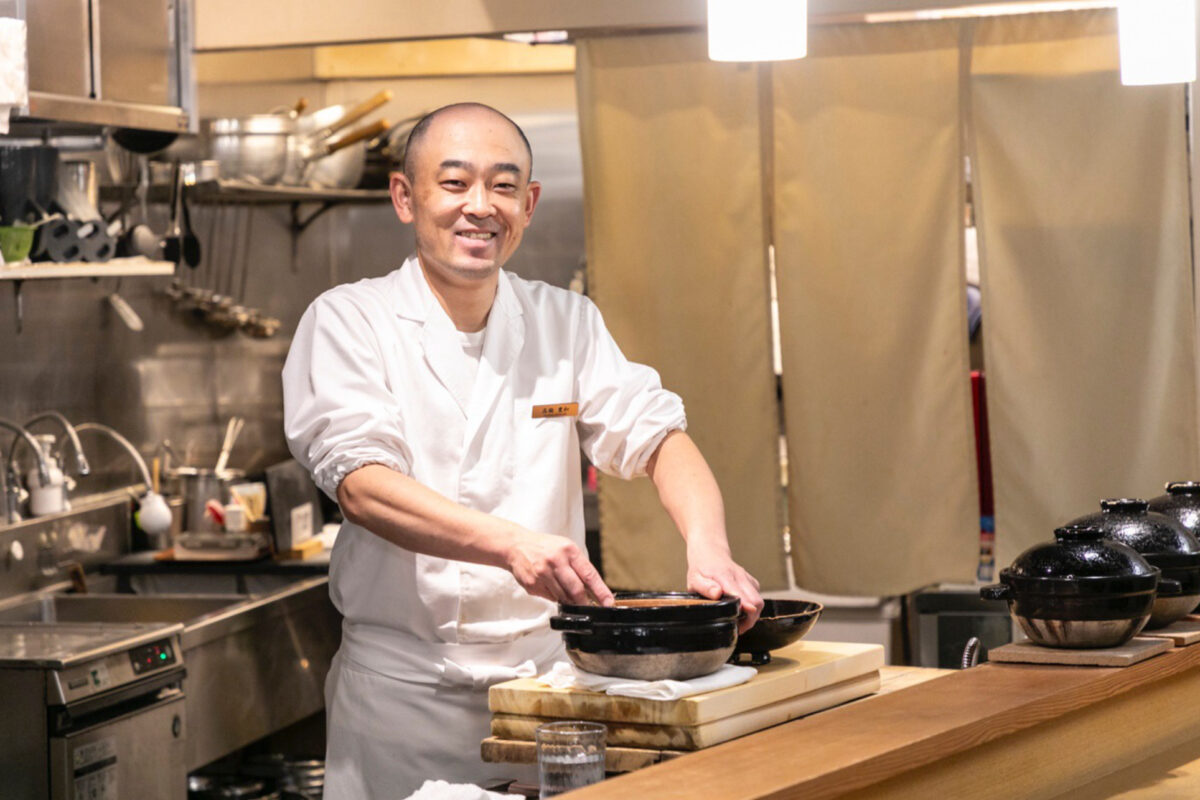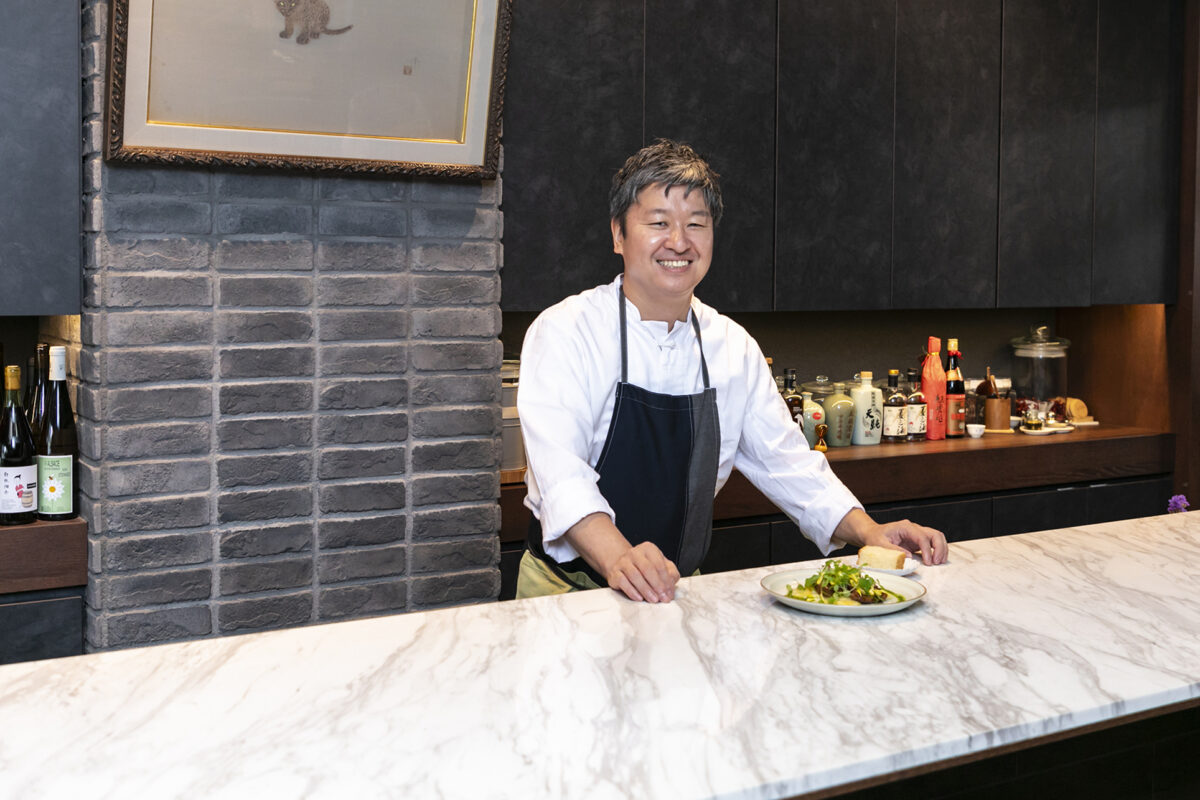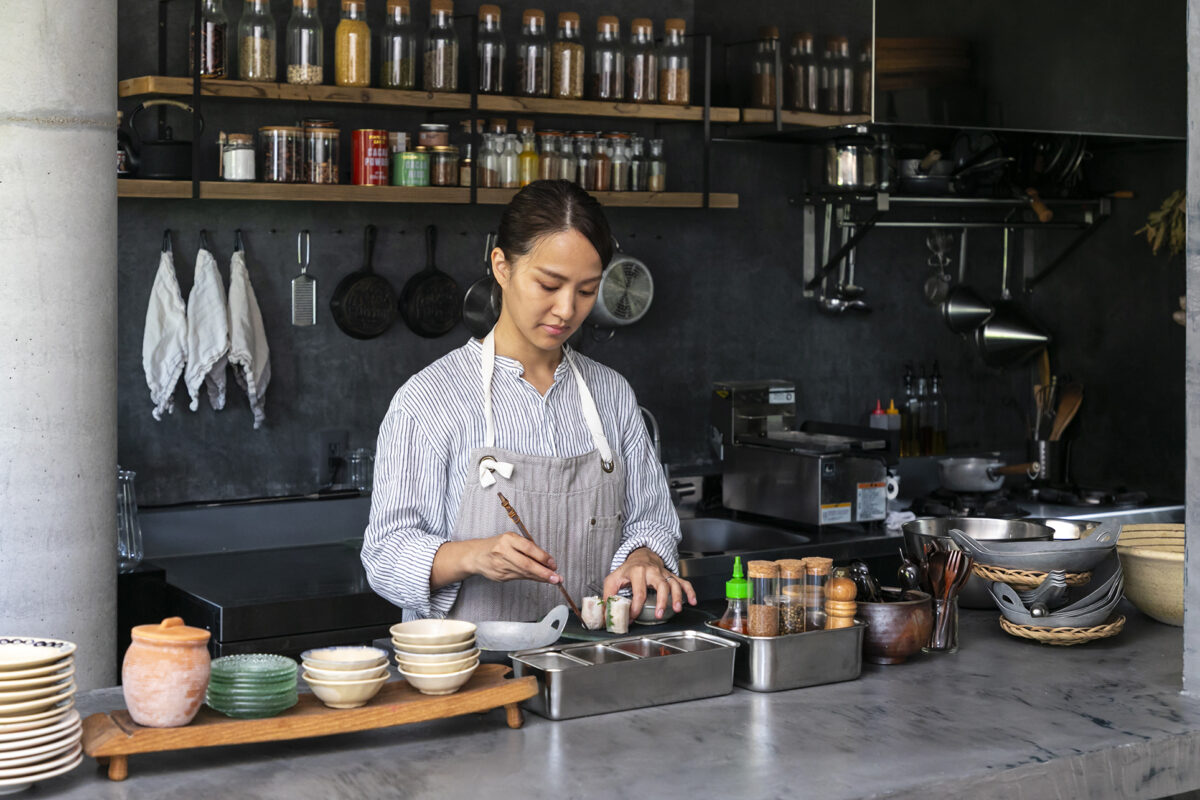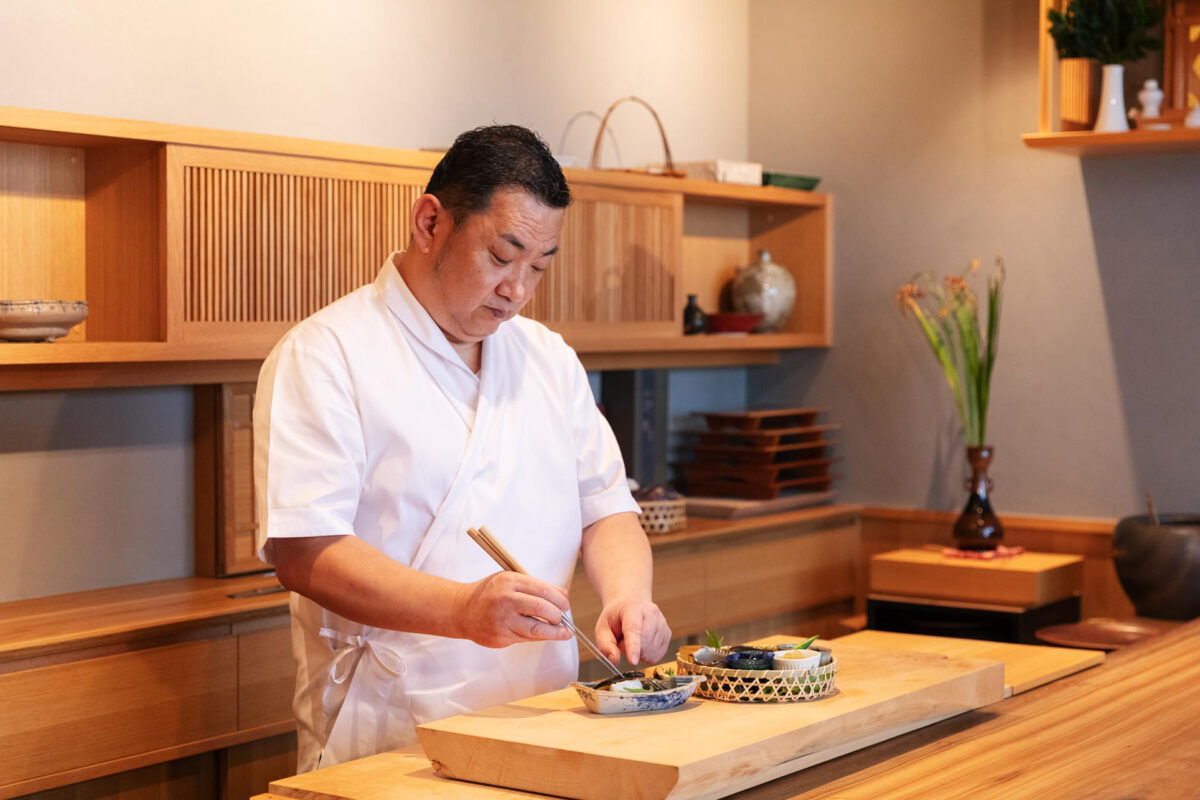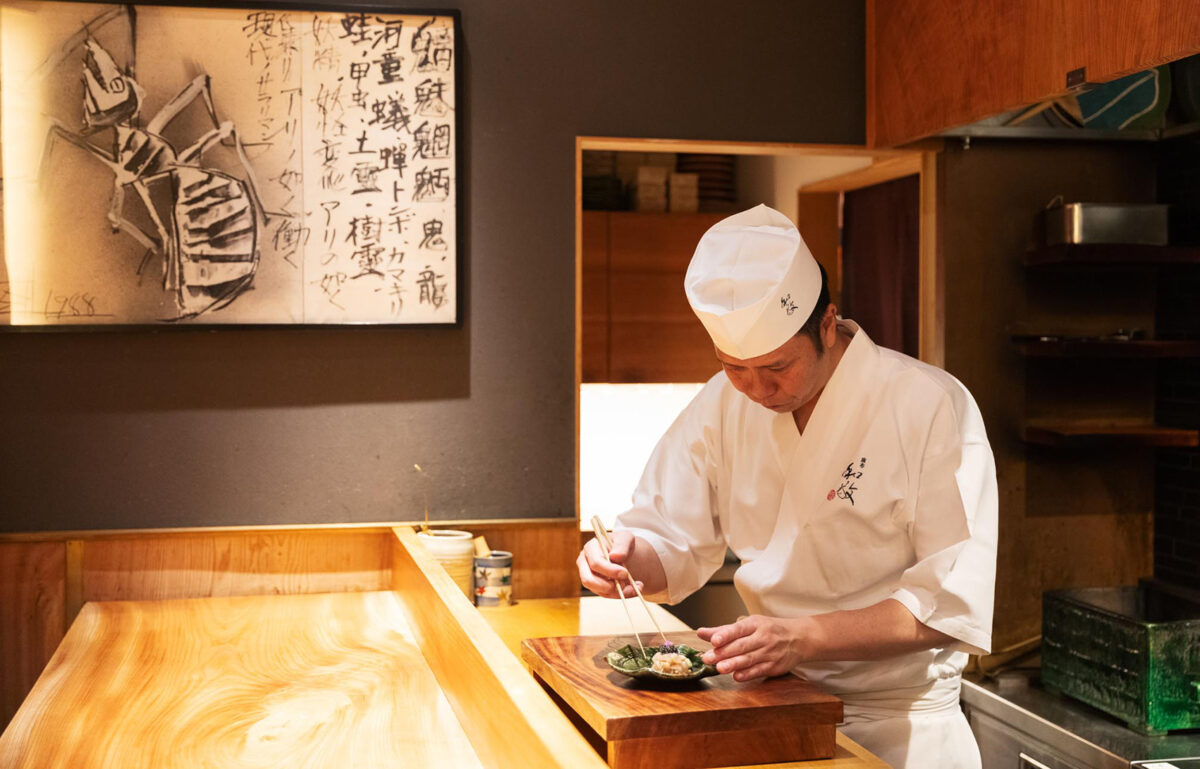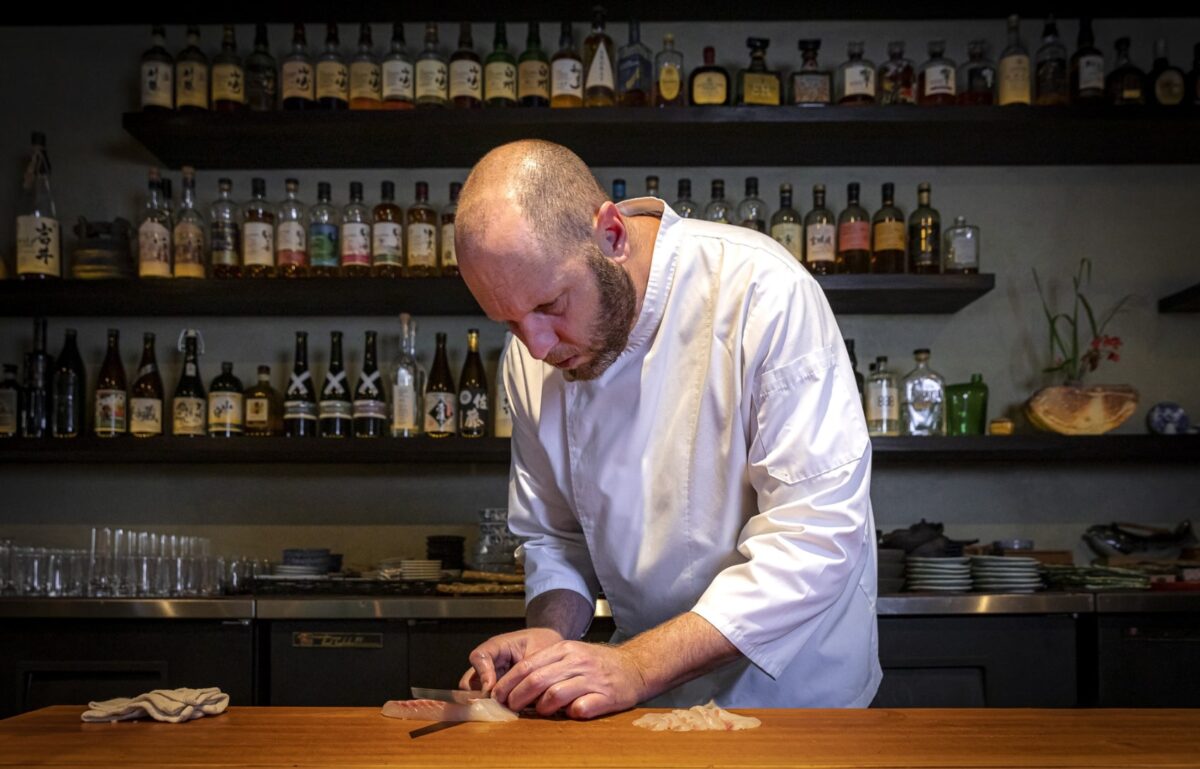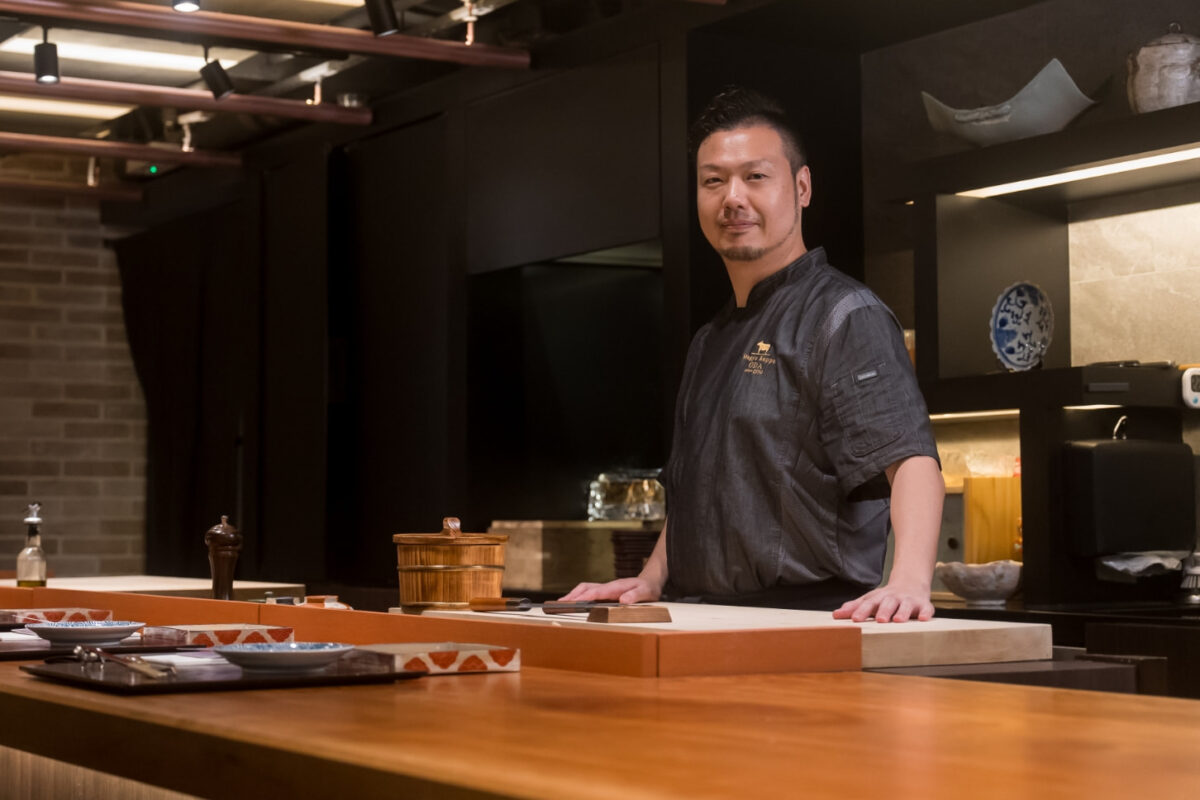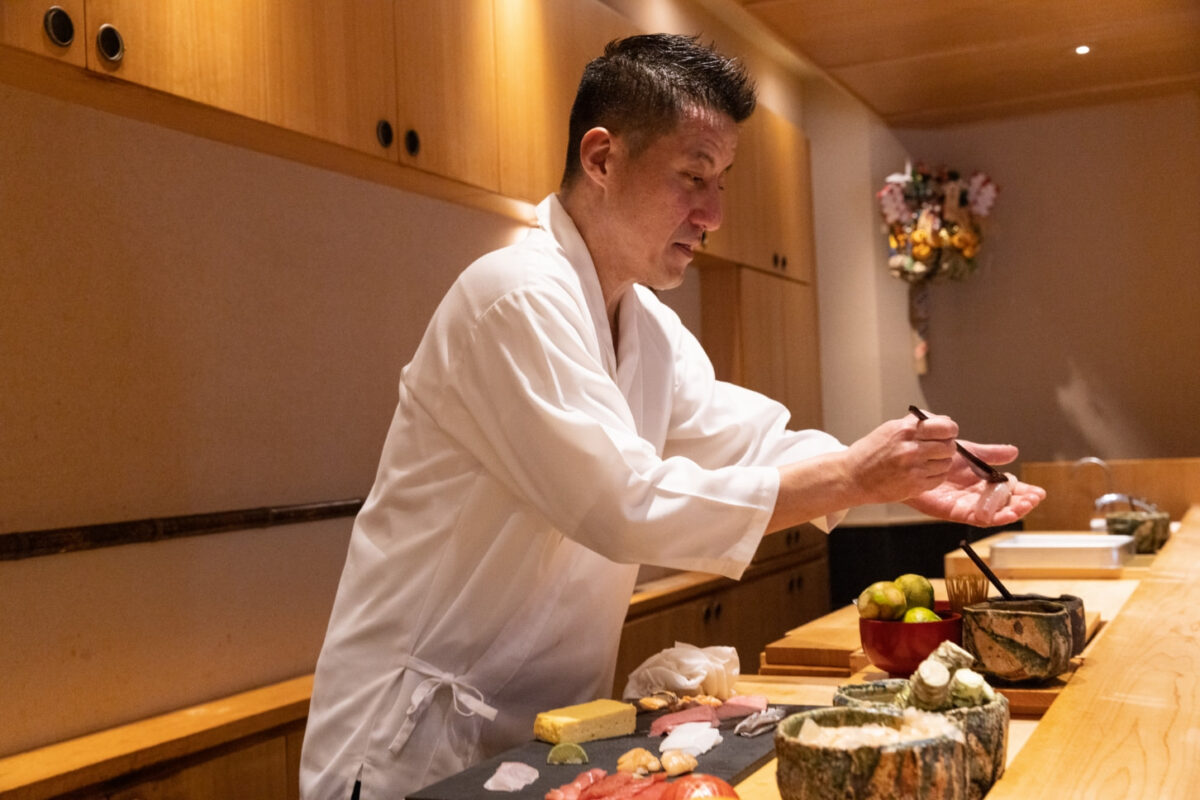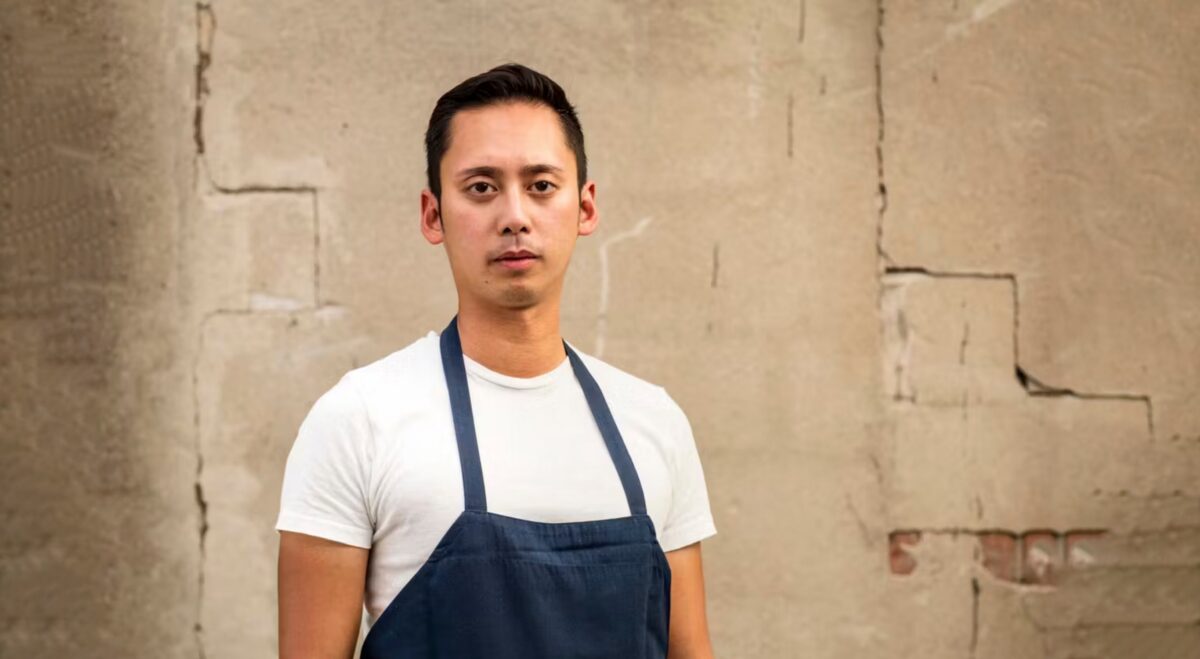Unrelenting pursuit of deliciousness
and intrigue
Providing an innovative dining experience that is a delight to the eyes and palate
Located at street level on Marunouchi Nakadori, the main street in Marunouchi, TexturA is an innovative fusion restaurant offering a unique dining experience. The restaurant serves innovative cuisine based on genuine Chinese and Spanish culinary techniques that delight both the eyes and palate.
The luxurious interior features an eye-catching high counter lit with a sparkling chandelier. The restaurant is split into two areas: the casual dining area provides a view of the street through large windows, while the high-end restaurant area has loosely arranged tables across a wide space laid with herringbone carpet. In this restaurant, customers can enjoy everything from a casual meal to a special anniversary.
Arasaki has been in charge of the Spanish cuisine since the restaurant first opened and is now the head chef. He is fully committed to finding new ingredients and creating highly original dishes using Chinese and Spanish culinary techniques. From the plating to the way the food is enjoyed, he uses his skills to make every aspect of the dining experience fun. In his unrelenting pursuit of deliciousness and intrigue, Arasaki looks for interesting and rare ingredients every day. When something piques his interest, he talks to the local producer directly. He also utilizes his connections with chefs from other culinary backgrounds, such as Japanese and French cuisines, to exchange information. He said that when he was participating in events to study European vegetables, he even organized training visits to production areas for his colleagues.
He said, “I spend each day searching for new ingredients such as foreign varieties of vegetables, but I only use Japan Rice for our rice. Japan Rice is packed with natural sweetness and umami, so it is delicious no matter how you cook it and even when served plain.” He added that Japan Rice plays an essential role in supporting his pursuit of innovative dishes.
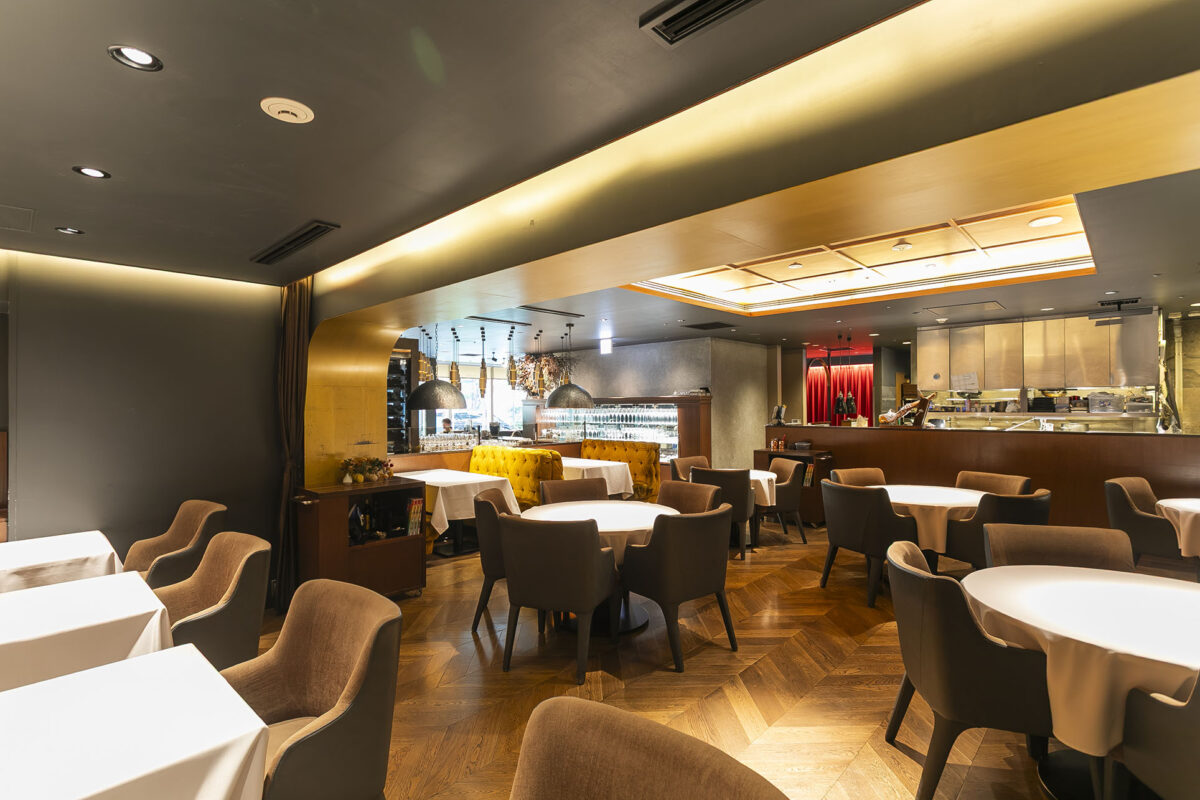
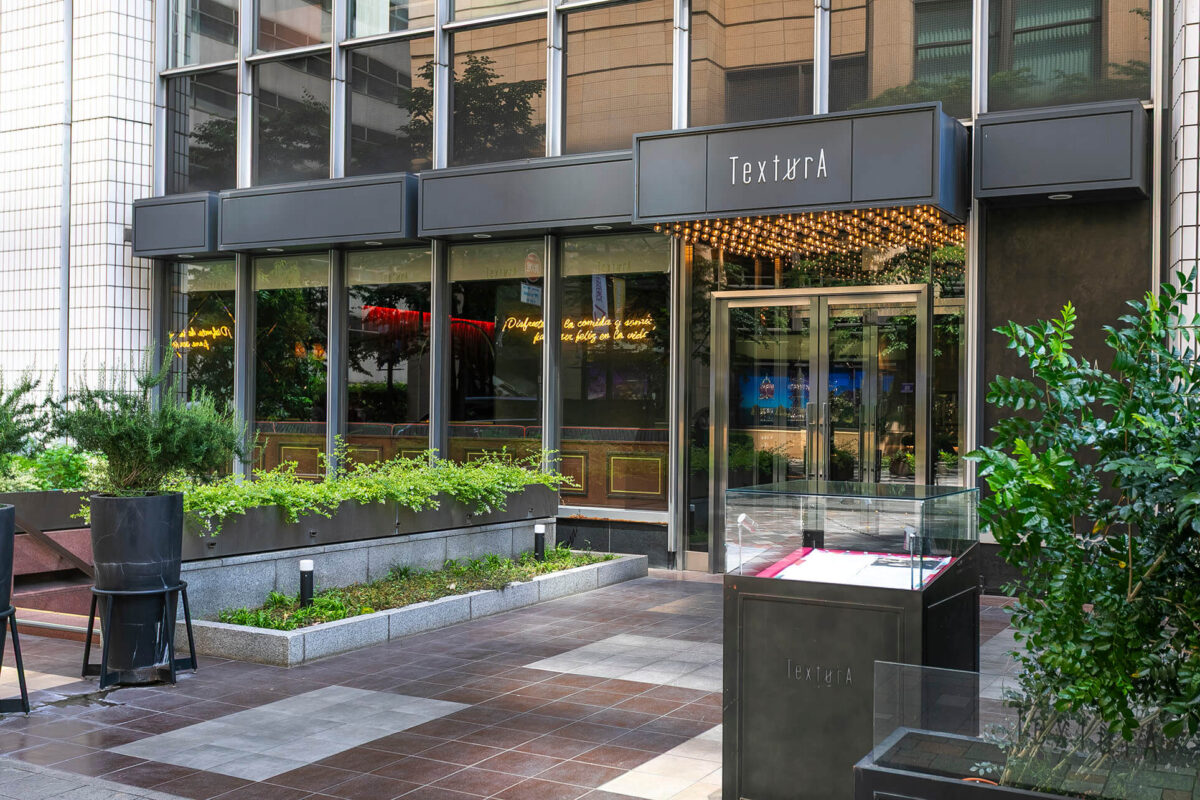
I want to cook delicious food to make people happy.
Being a chef has been my dream since childhood.
I have always liked helping my mother cook since I was little. Eventually, I was put in charge of making scrambled eggs for my father’s breakfast, and they called me “head chef.” That made me realize how fun it was to cook and feed other people.
It was in elementary school that I first dreamed of becoming a chef. I used to watch TV shows where chefs competed using their skills, and I thought, “I want to be a cool chef like them.” Besides, a job where I can make delicious food that brings joy to others is like playing all the time for me, so it seemed incredibly fun.
After graduating from high school, I went to a vocational college that trains chefs. There, I learned different culinary styles, such as French and Italian. I then trained for five years at Ogawaken, a long-established Western-style restaurant, where I held various positions involved in preparing French course meals. Once I reached a certain skill level, I decided to try something new other than French cuisine. Looking back, when I visited France, Italy, and Spain for training during college, I found myself best suited to the local character of Spain, which was friendly and relaxed. I was then hired by Whaves, the company that runs TexturA, in 2013, and I began proper training at Comedor Monrico, a Spanish bar in Tamachi, Tokyo.
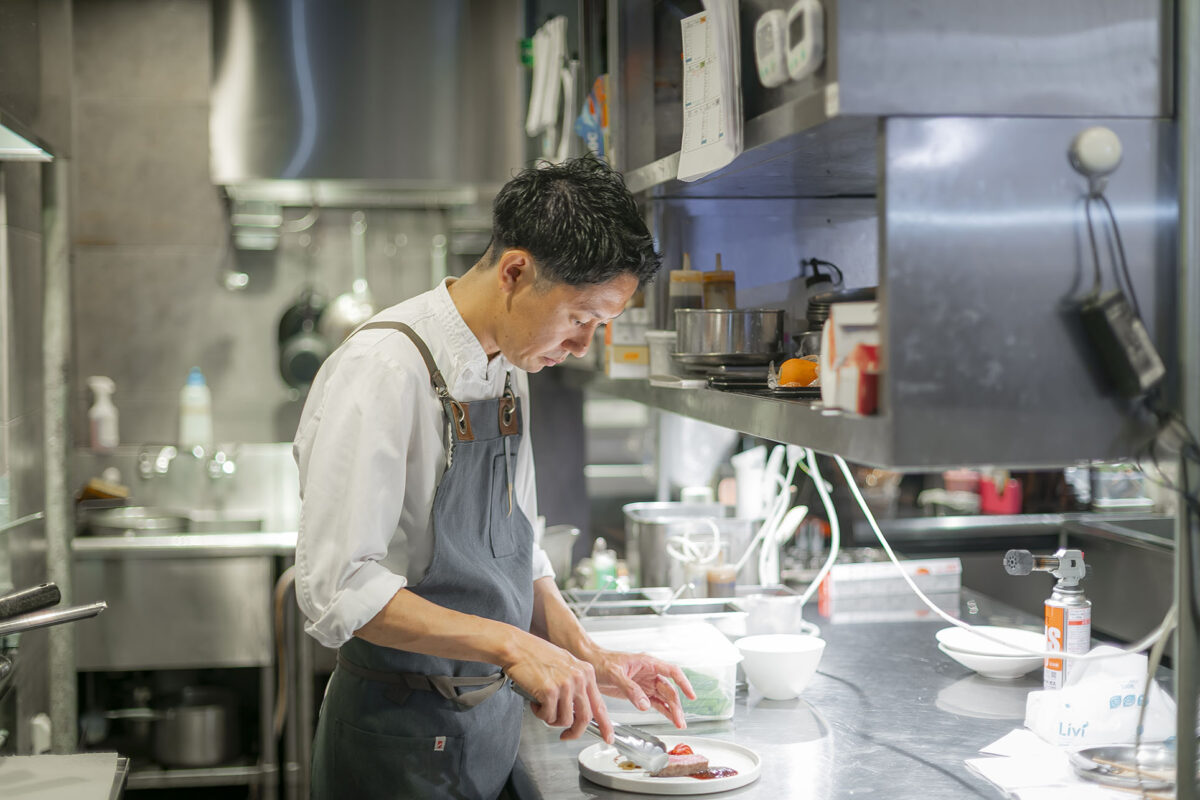
I create innovative dishes with new ingredients and
consistently provide unique
surprises and fun.
After about three years with the company, I became a chef at Comedor Monrico and gained experience at various restaurants as well. My perspective as a chef changed significantly when I used the company’s study abroad program to train for one month at a Michelin 1-star restaurant in Spain called El Doncel.
The core concept of the restaurant was to “strive to always think and improve.” There were blackboards set up all around the kitchen so we could immediately write down any ideas we came up with. Even the plating of a single dish was constantly changed to make it better. Changing every day became the norm, which had a large impact on me. This training is held every year, and when I talked to other trainees, I learned that they too are continuously changing and evolving. This inspired me to become as good as a genuine Spanish chef.
In 2019, I was appointed chef in charge of the Spanish cuisine at TexturA, and after that, I was put in charge of all cooking as the head chef. In addition to what I learned in Spain, I also value a playful imagination and strive to consistently provide unique surprises and fun.
I keep an open mindset and continue searching for interesting and rare ingredients for each season, so the end goal is not just making delicious food. I am always thinking, “How can I use Spanish and Chinese culinary techniques to make the ingredients more interesting and create something unique?” or “How can I plate this so that it is surprising and fun?”
Century egg tofu with espuma is one of our popular Chinese cold vegetable hors d’oeuvres. It is a jelly made of century egg from China, micro herbs, finely chopped seasonal vegetables, and capers tossed in lemon juice and olive oil with smooth tofu. It is topped with an egg yolk sauce and airy soy milk-based espuma (foam) to create a new flavor that delights both the eyes and the palate. I also used edible cucumber flowers as a new ingredient, not only to create a beautiful dish, but also to surprise diners: “I thought it was just for decoration, but it actually tastes like cucumber!”
At our restaurant, we change our course menu every three months. I try new ideas each time as a way to improve. I also have a sommelier license, so I consider the wine pairing when I do my trials as well. I seek out the best ingredients and seasonings, and I aim to further improve the dishes.
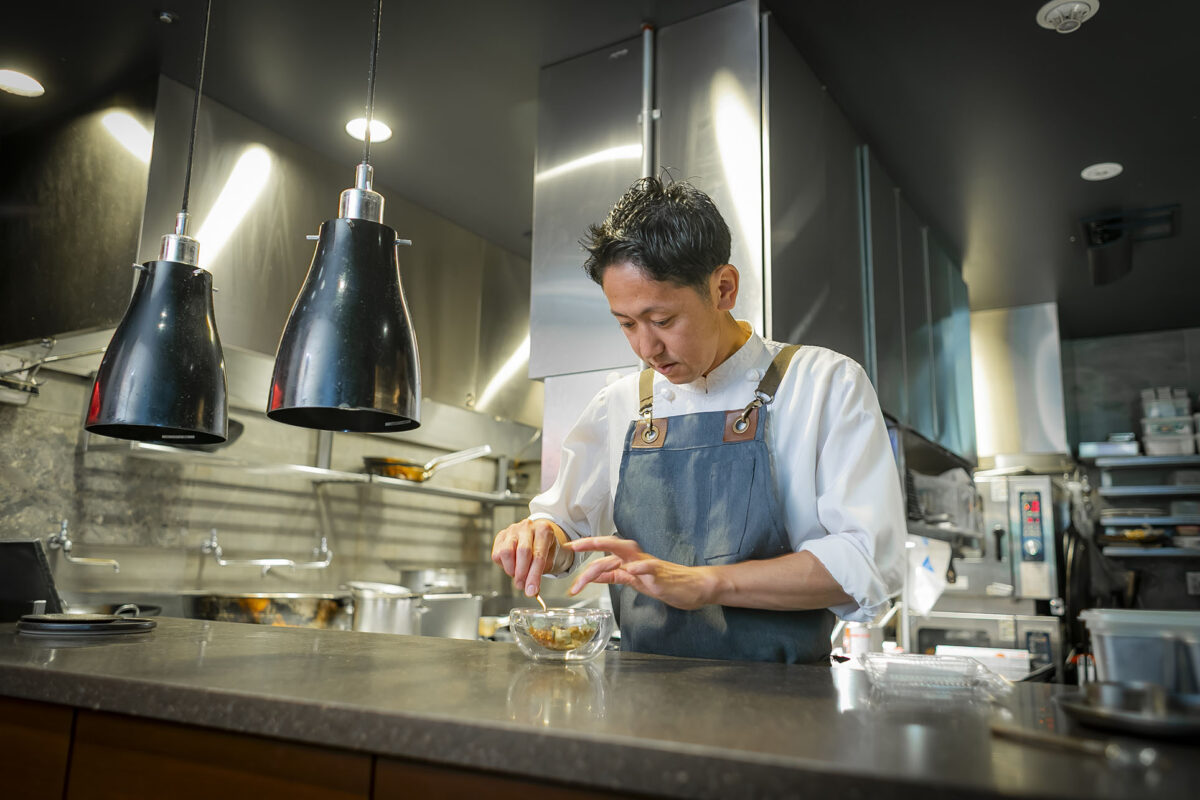
Japan Rice is essential as a main dish and a side dish.
Rice is very important in Spanish cuisine. After all, there are so many restaurants that specialize in just paella. Spanish bomba rice has large grains and a mild flavor. It absorbs the umami from the broth, making it great for paella.
Nevertheless, I have always stuck to using Japan Rice. At our restaurant, we serve a wide variety of dishes such as paella and meloso (a rice dish similar to rice porridge) as Spanish cuisine and fried rice or white rice with mapo tofu as Chinese cuisine, so it is important to have rice that is delicious no matter how it is prepared—even when eaten plain.
Nanatsuboshi from Hokkaido is both refreshing and has a depth of flavor with sweetness and umami, so it feels like the ideal rice. For example, when you cook it with vegetables and seafood and let it absorb the broth or when you fry it with ingredients, the natural umami of the rice adds to the flavor, making the dish even more delicious. That is why I always use Nanatsuboshi rice when it is supposed to be the star of the dish.
Japan Rice is also delicious when eaten plain, but when eaten with a main dish, it acts as an excellent supporting actor by further enhancing the flavor. I feel that Japan Rice is essential for me to continue creating unique dishes and serving delicious combinations.
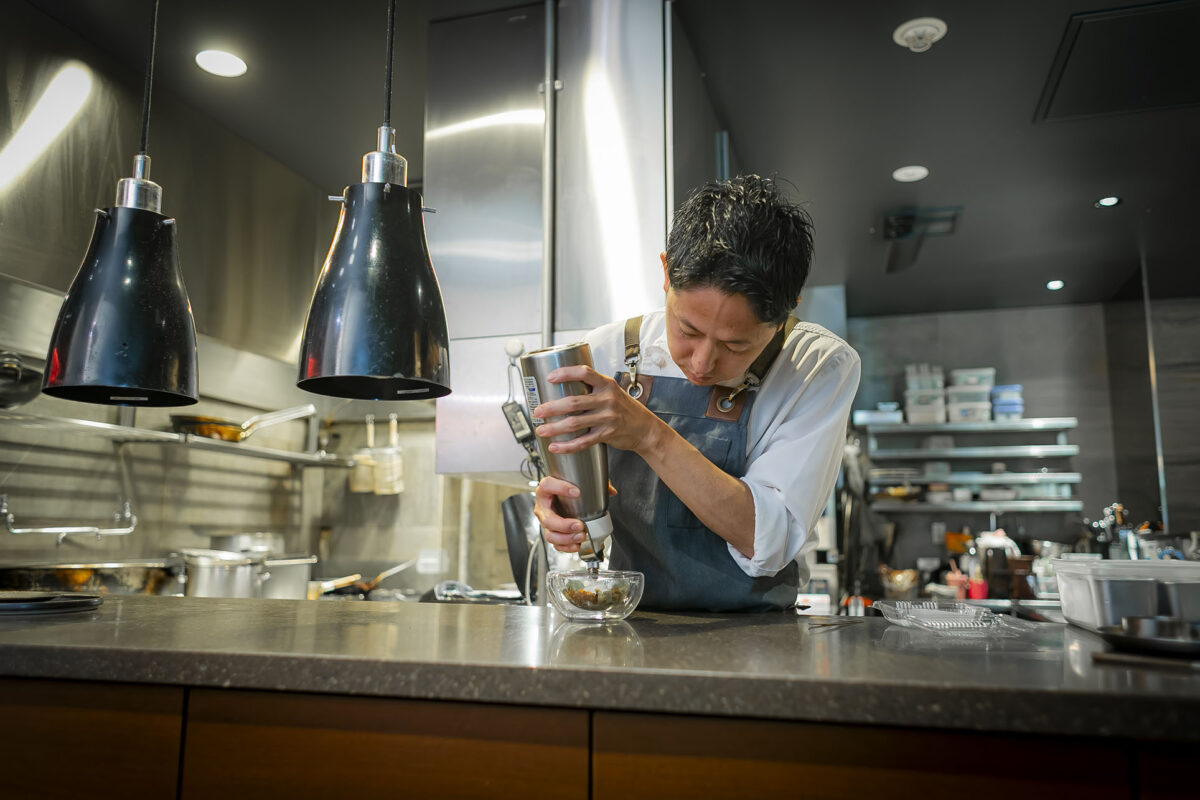
The trick to savoring the sweetness and umami of Japan Rice is
to not over-wash it and to cook it in a pot.
I love rice, so I often cook it at home too. The first trick to making it taste great is to not over-wash it. Japan Rice is produced with high-quality milling techniques, so you only need to wash it briefly. You can retain the umami better if you do not over-wash it. It is also normal in Japan to let the rice sit in the water for about half an hour before cooking to soak up the water. This is important because it makes the rice fluffier.
Another important trick is to cook it in a pot rather than a rice cooker. By cooking rice over high heat with gas, the grains circulate well, resulting in a firmer texture. With a pot that can be used on an open flame, the circulation improves even more and it makes the rice taste even better, so if you have a pot like that, I recommend cooking rice in it.
When the rice is done, leave it for 15 minutes without opening the lid. Steaming it lets the heat settle evenly to make the rice fluffy and chewy.
When I make paella as a chef, I first fry the rice to cook off the moisture. This gives the rice room to soak up more broth and become thoroughly flavored. Another key point is to cut the ingredients, such as vegetables and seafood, to the same size as the rice grains. The rice absorbs the umami of the ingredients better, so it is even tastier.
In contrast, when making Chinese fried rice, I just add a small amount of water at the end. Rice tends to dry out when stir-frying it with ingredients, so adding some water at the end gives it a fluffy texture.
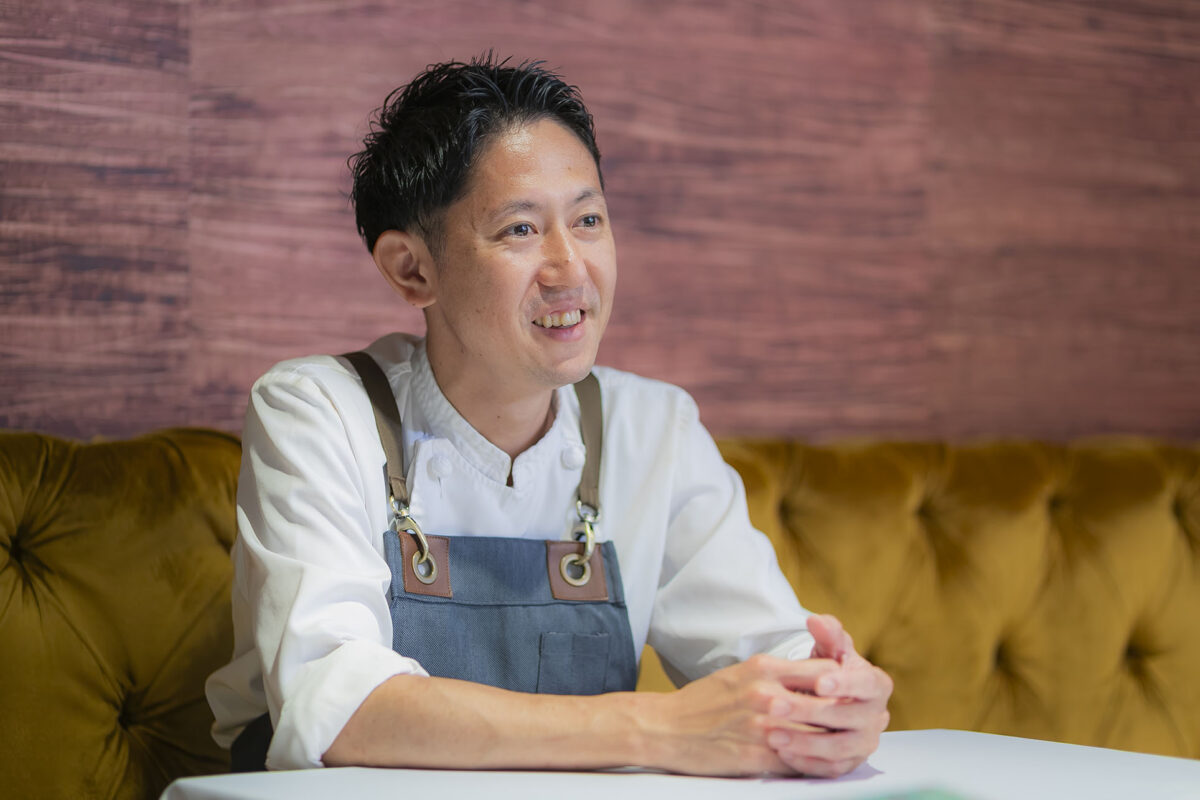
In an onigiri with your favorite filling,
you can taste the delicious flavor of rice like pincho.
To Japanese people, rice is not just another ingredient, but a staple food. I think all Japanese people eat rice at least once a day, whether at breakfast, lunch, or dinner, and I myself often eat rice at work and at home.
In other countries, people tend to eat rice as they would a salad, and it feels as though rice is simply considered as another ingredient in a dish. However, Japan Rice is delicious even when eaten plain. Perhaps that is the reason why Japan has the unique habit of combining white rice with other dishes. If you have never had it that way before, I hope you will give it a try.
What I recommend is an onigiri (rice ball). The other day, I gave an onigiri to a chef I had invited over from Spain, and he said it was like a Japanese pincho and was absolutely delighted. Pinchos are a type of snack in Spain, typically made by putting ingredients on a bite-sized piece of bread and then skewering them. Onigiri is easy to make—you just put in your favorite filling and shape it to enjoy the harmony between the rice and the ingredients. It is very filling, so you can also have it for lunch.
It is a very simple recipe and a great easy way to enjoy the delicious flavor of Japan Rice.
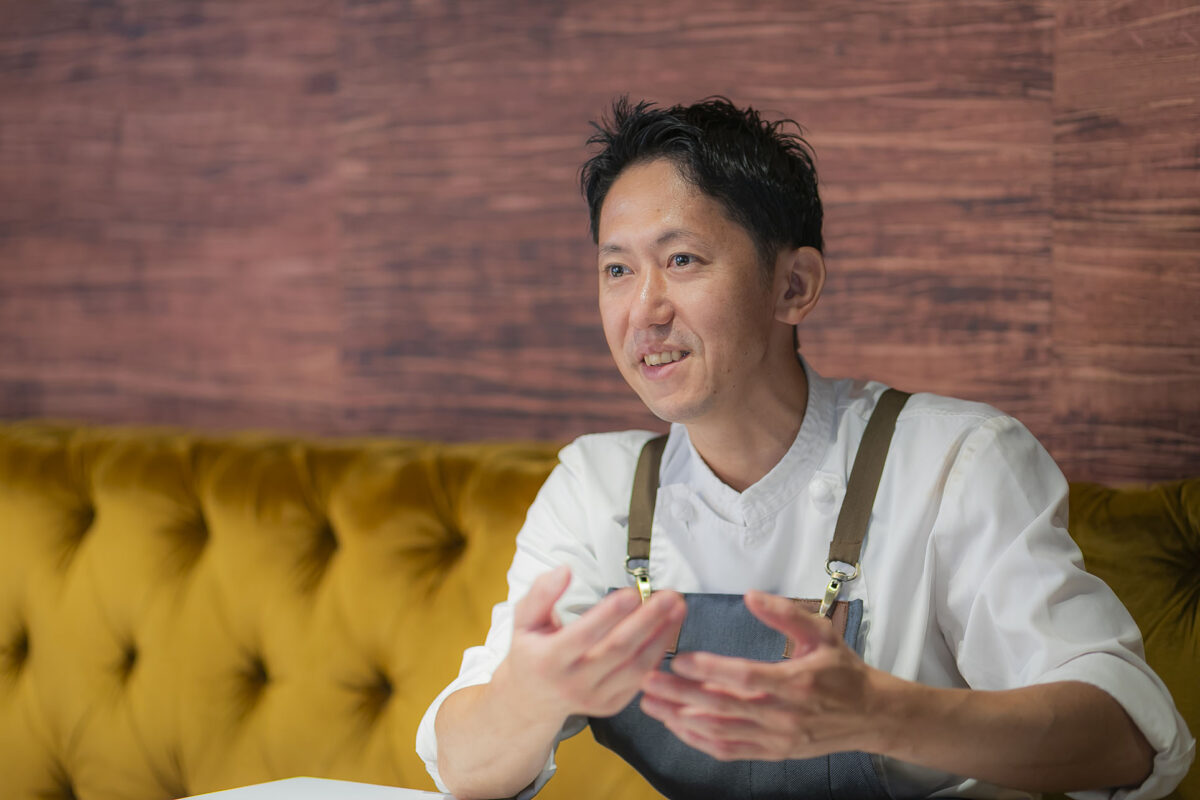
Recommended dish
Century egg tofu with espuma 「皮蛋豆腐~エスプーマ仕立て~」
Century egg tofu is a very simple and popular appetizer in Chinese cuisine. Here, it is presented in a Western-style plate using Spanish culinary techniques. Finely chopped mizunasu eggplant, Szechuan pickles, cucumber, and capers in olive oil and lemon juice are turned into a ravigote sauce that is topped with micro herbs from Ishikawa Prefecture to create a gentle fragrance. The contrast between the soft tofu and crispy condiments creates a complex rhythm in your mouth, beautifully expressing the fusion of Western and Chinese cuisine.
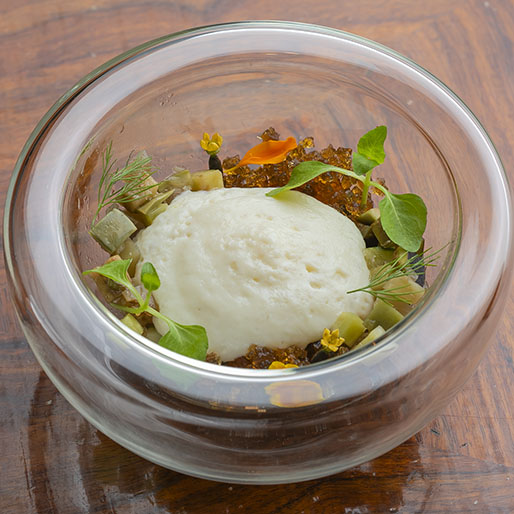
Recommended dish
Chinjao Rosu (stir-fried beef and green pepper) 「青椒肉絲(チンジャオロース)」
This classic Chinese dish is arranged in a unique way into a Western-style presentation similar to a French main dish. It is made with bold wide-cut menma (fermented bamboo shoots) from Miyazaki Prefecture and piquillo peppers from Spain (small red peppers from the Navarre region). It is paired with Japanese Black beef with a chewy texture similar to roast beef and an espuma (foam) made of black pepper and fond de veau to create a new dish that is eaten with a fork and knife.
